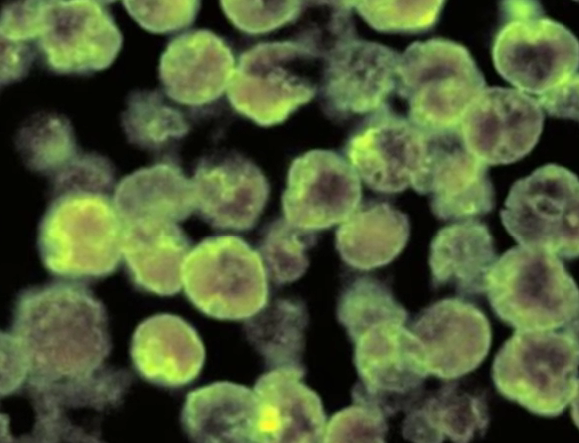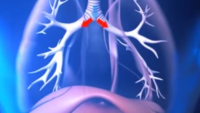Pope County Lake Containing Brain-Eating Amoeba Sickens Young Swimmer
| Quadey Humile | | Jul 10, 2015 09:11 PM EDT |
(Photo : YouTube) A fresh-water brain-eating amoeba found in Pope County Lake is reported to be behind a young swimmer’s critical condition.
A fresh-water brain-eating amoeba found in Pope County Lake is reported to be behind a young swimmer's critical condition.
The child developed a rare and severe brain infection after swimming at Lake Minnewaska, the Minnesota Department of Health announced Tuesday evening, July 7.
Like Us on Facebook
Health authorities suspect the child developed an infrequent form of meningitis known as primary amebic meningoencephalitis (PAM) caused by the amoeba Naegleria fowleri which is linked to warm, fresh water areas, Daily Globe has learned.
Despite being found in water, N. fowleri cannot be contracted by drinking contaminated liquid, rather by entering the body through the nose usually by swimming.
After gaining entry to the body through the nose, the amoeba then travels to the brain causing an infection called meningoencephalitis.
The young victim was not identified by state officials but a family-created CaringBridge site recognized him as Hunter Boutain of Alexandria, Minn. The site mentioned that Hunter is being treated for the infection at the University of Minnesota Medical Center in Minneapolis, Star Tribune reported.
Bryan Boutain, the 14 year old's uncle, posted details on the site indicating that the lad was generally unresponsive and is breathing with the aid of a respirator.
The severe brain infection caused by N. fowleri is almost always deadly.
Symptoms of PAM have two different stages. During the first stage, the victim experiences fever, nausea and vomiting. These symptoms reportedly manifest about five days after exposure.
In the second stage, the infected person suffers seizures, hallucinations, coma and even death, as per the CDC.
Infection by N. fowleri is very rare that there were only just 35 confirmed cases in the country in the last decade.
Two cases were reported from Minnesota prior to Hunter's case. One was in 2010 which took the life of seven-year-old Annie Bahneman after swimming in a Stillwater lake, and the other in 2012 which killed 9-year-old Jack Ariola Erenberg who also swam in the same lake. Both cases were confirmed to be PAM, according to CBS Minnesota.
Despite the low risk of infection brought by N. fowleri, MDH Waterborne Diseases Unit Supervisor Trisha Robinson provided ways on how to avoid exposure from the pathogen.
"While the only sure way to prevent PAM is to avoid participation in freshwater-related activities, you can reduce your risk by keeping your head out of the water, using nose clips or holding the nose shut, and avoiding stirring up sediment at the bottom of shallow freshwater areas," Robinson said.
An update to this news story from TwinCities.com revealed that the young swimmer died Thursday.
TagsPope County Lake, Amoeba, Brain-Eating Amoeba, Freshwater Amoeba, Naegleria Fowleri, PAM
©2015 Chinatopix All rights reserved. Do not reproduce without permission
EDITOR'S PICKS
-

Did the Trump administration just announce plans for a trade war with ‘hostile’ China and Russia?
-

US Senate passes Taiwan travel bill slammed by China
-

As Yan Sihong’s family grieves, here are other Chinese students who went missing abroad. Some have never been found
-

Beijing blasts Western critics who ‘smear China’ with the term sharp power
-

China Envoy Seeks to Defuse Tensions With U.S. as a Trade War Brews
-

Singapore's Deputy PM Provides Bitcoin Vote of Confidence Amid China's Blanket Bans
-

China warns investors over risks in overseas virtual currency trading
-

Chinese government most trustworthy: survey
-

Kashima Antlers On Course For Back-To-Back Titles
MOST POPULAR
LATEST NEWS
Zhou Yongkang: China's Former Security Chief Sentenced to Life in Prison

China's former Chief of the Ministry of Public Security, Zhou Yongkang, has been given a life sentence after he was found guilty of abusing his office, bribery and deliberately ... Full Article
TRENDING STORY

China Pork Prices Expected to Stabilize As The Supplies Recover

Elephone P9000 Smartphone is now on Sale on Amazon India

There's a Big Chance Cliffhangers Won't Still Be Resolved When Grey's Anatomy Season 13 Returns

Supreme Court Ruled on Samsung vs Apple Dispute for Patent Infringement

Microsoft Surface Pro 5 Rumors and Release Date: What is the Latest?














